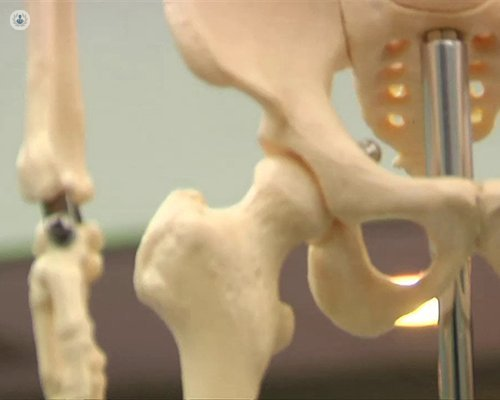I have a bone infection. How can it be treated?
Escrito por:What are the main symptoms of bone infection, and is it dangerous for people with diabetes when they experience an infection of any given bone in their body? Find out in our latest article below, as esteemed London-based trauma and orthopaedic surgeon, Professor Nima Heidari, describes the most common symptoms of bone infections, reveals how bone infections are treated, and walks us through the diagnostic process.

What exactly is osteomyelitis?
Osteomyelitis (a bone infection) is when either bacteria, or very rarely, fungus, infect the bone. It is not particularly common, and the way it presents itself varies depending on the infecting organism.
For example, some bacteria can have a rapid effect, and others are much less rapid. Generally, symptoms will be experienced some time after the bone has first become infected, and most patients will not typically suffer severe symptoms, but they can nonetheless have a huge effect on the quality of life.
What are the main symptoms of osteomyelitis?
The most common symptoms include a temperature and feeling unwell. You can also suffer from redness, swelling, pain, and, occasionally, leaking of puss from a sinus. This can become a long-term, chronic problem which has a dramatic effect on the quality of life.
How is osteomyelitis diagnosed?
The diagnosis requires getting a detailed medical history from the patient. It is important to know details of the injury, the treatment, as well as any medical conditions such as diabetes. The surgeon will then examine the area for signs of previous injury and surgery. Local scarring and quality of the surrounding skin will influence the treatment options that can be offered to the patient.
We then carry out some blood tests, which would typically involve a blood test called a ‘white cell count.’ We then also look at something called ‘inflammatory markers’ which are very broad signs of the body reacting to infection or inflammation.
We then perform a number of scans, such as CT scans, ultrasound scans, MRI scans, and X-rays, and occasionally, a PET CT scan. By carrying out these different imaging scans, we can distinguish whether it is indeed an infection of the bone or perhaps another condition.
Once all of this information is gathered, the next stage is to carry out surgery for the treatment of the infection. At this stage, we are then able to take deep biopsies from the site of the infection. This involves taking samples and analysing the tissues and bone under a microscope. We also culture these samples to see which microbes grow so that we can identify them and then target the antibiotics and treatment.
Is it dangerous for a person with diabetes to develop osteomyelitis?
Bone infection in individuals with diabetes can be difficult to treat. Individuals with diabetes are more susceptible to developing an infection such as osteomyelitis, either as a result of injury or as a result of surgery. Diabetes can have a profound effect on how the body is able to respond to a condition such as osteomyelitis.
Those with poorly controlled diabetes are a particular challenge as they also have problems with their kidneys, eyes, and the nerves in their feet. They may also have poor blood flow and problems with their circulation.
One of the main reasons for amputations in people with diabetes is ulcerations of the foot which can lead to bone and soft tissue infections. Sometimes, an amputation is required in order to control and treat the infection, especially if it becomes life threatening.
Furthermore, the presence of infection can cause problems in relation to the control of diabetes. In individuals with diabetes, bone infections can have quite severe complications.
How is a bone infection treated?
Treatment for a bone infection invariably requires surgery. This involves removing the dead and infected bone as well as dealing with scarred and poorly nourished soft tissues. If the infected area involves a fracture or a non-healing fracture (also called a non-union), this will require stabilisation. This most commonly achieved with an external fixator. Patients must stop smoking and consuming alcohol.
Antibiotics form an important part of the treatment, but antibiotics alone in the established bone infection are not effective.
Professor Nima Heidari is a highly experienced and skilled consultant trauma and orthopaedic surgeon who specialises in bone infections. Consult with him today to book a consultation with him via his Top Doctors profile.


